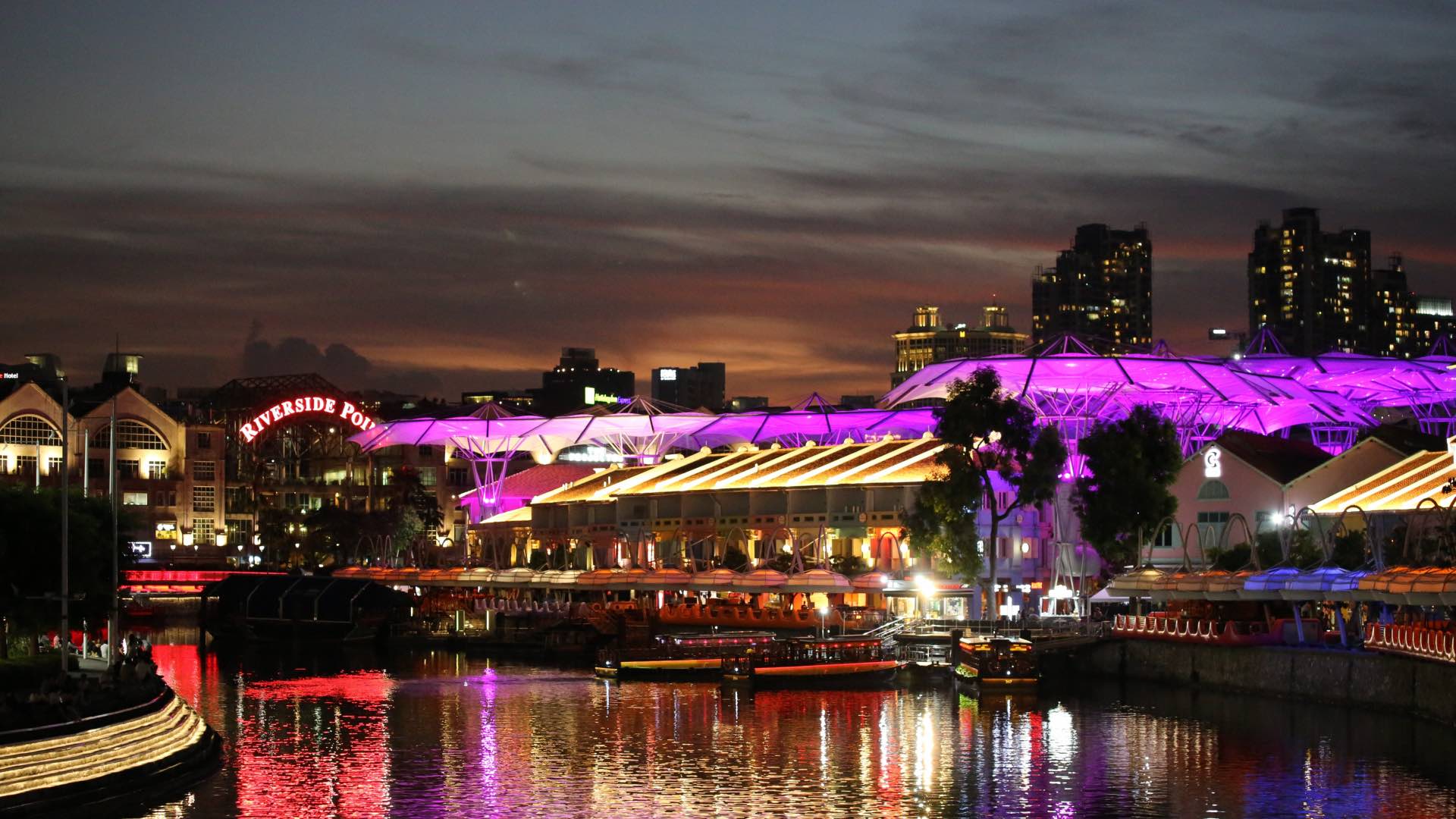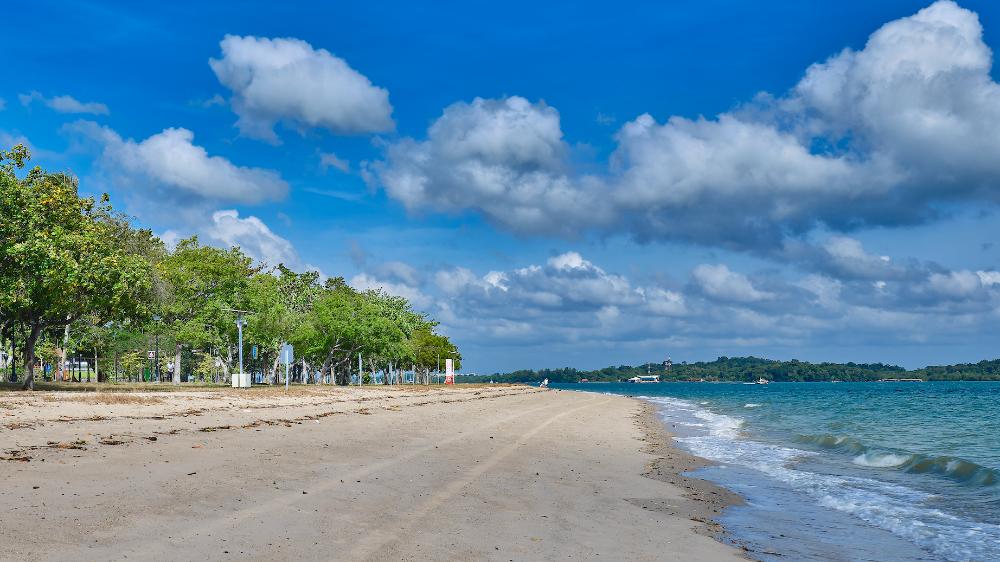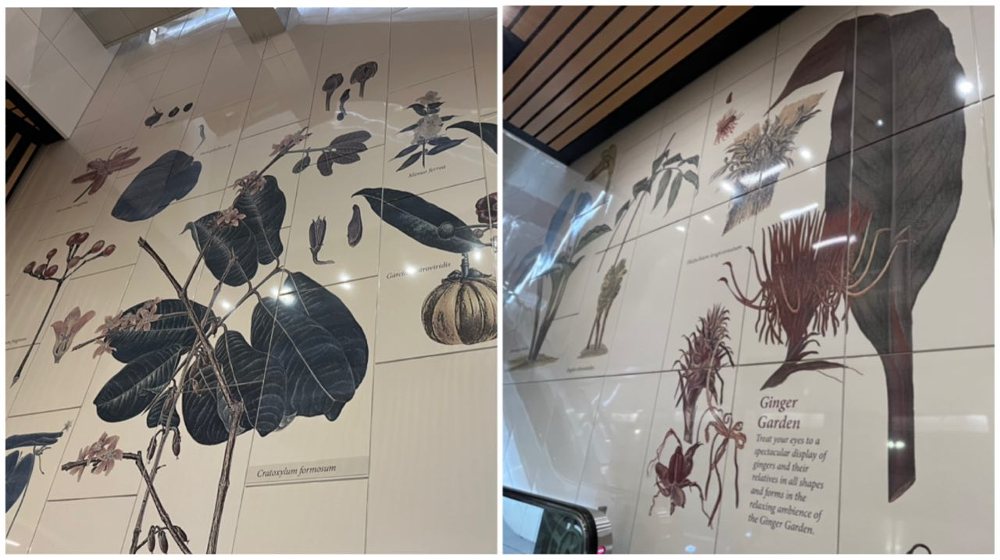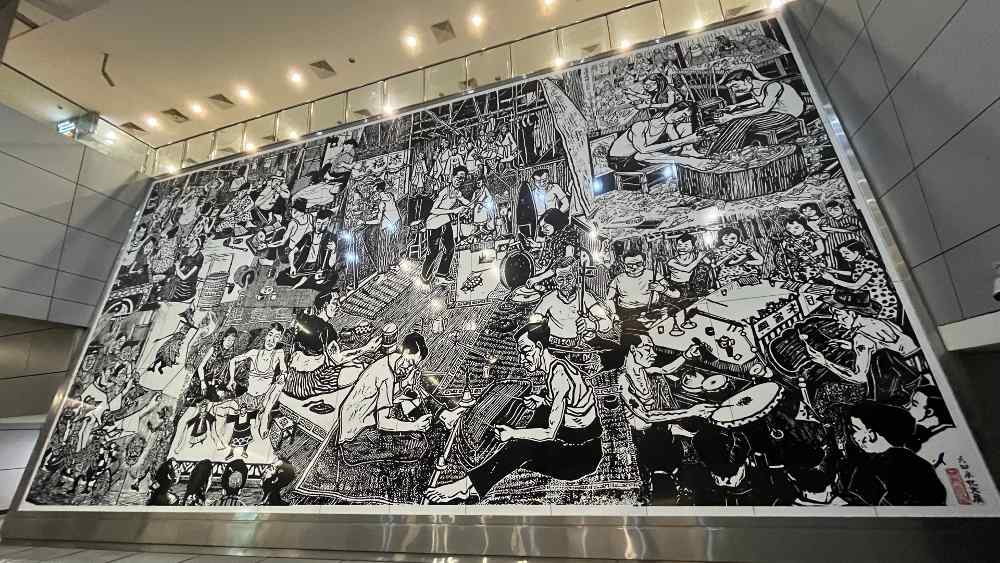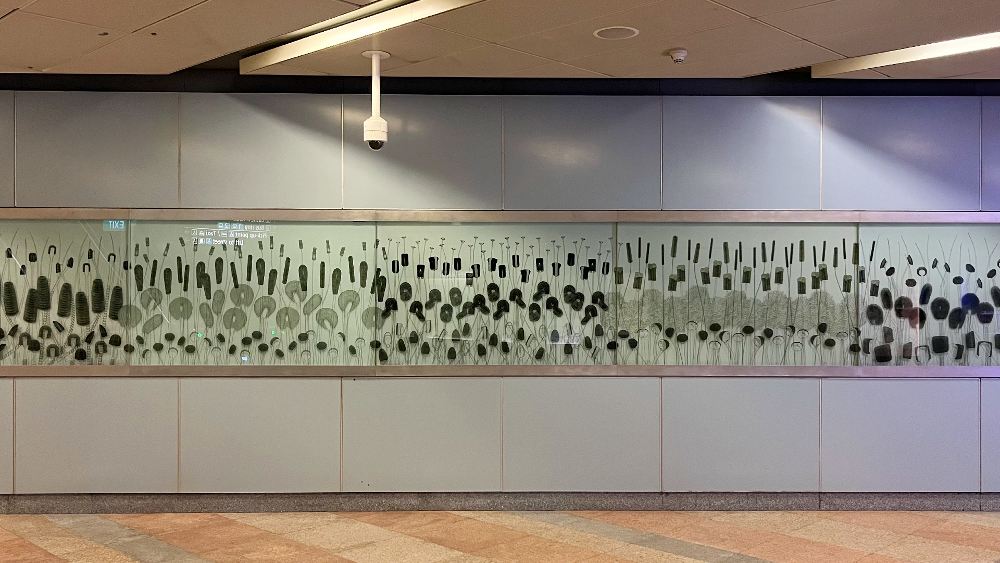Adventures At Home: Let's Rediscover The Singapore River
What are your fond memories of the Singapore River? Perhaps it's hanging out after dark with the bros at Clarke Quay? Maybe you had your first date with bae at Robertson Quay?
The history of our nation is closely tied to the Singapore River - it was at the river’s mouth where Stamford Raffles first stepped onto our island, and where Sang Nila Utama discovered the mythical lion that gave our city its name. And hey, we’re forever reminded of the Singapore River whenever we sing our ‘98 NDP song, “Home”.... And now the song is stuck in our heads.
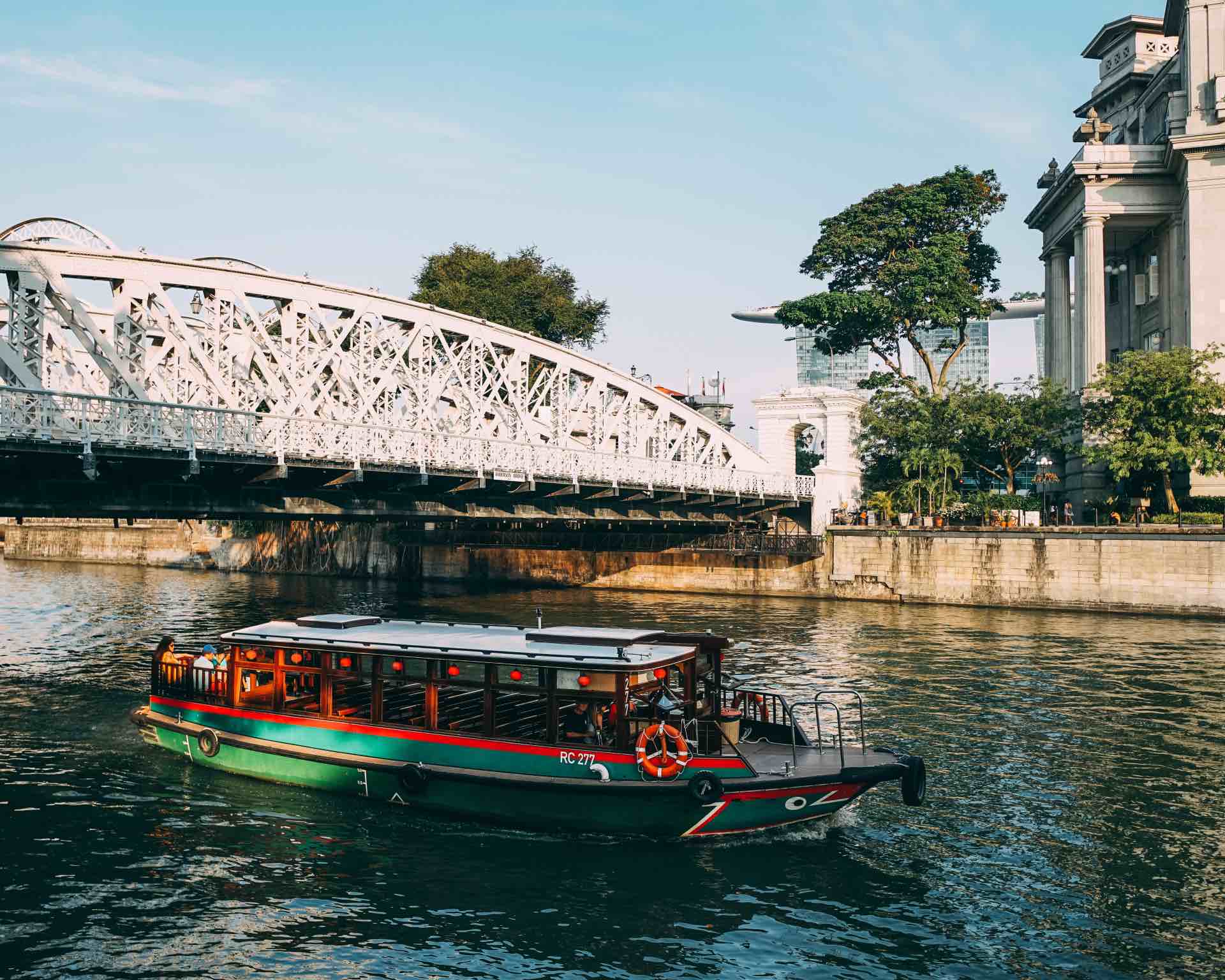
The Singapore River of the past definitely wasn’t the poster child for cleanliness - our first Prime Minister Lee Kuan Yew called for the murky waterways to be cleaned up in the late ‘70s. Now it’s so clean that families of otters have called it home.
With the National Heritage Board’s Singapore River Walk trail in hand, we rediscover how it contributed to the growth and development of our country over the years.
Visit the bridges that line the Singapore River
Cavenagh Bridge
You know you’re at the right place when you see this signboard. If you’re wondering, 3 cwt is about 152kg. So the bridge only allowed pedestrians to cross. No animals allowed!
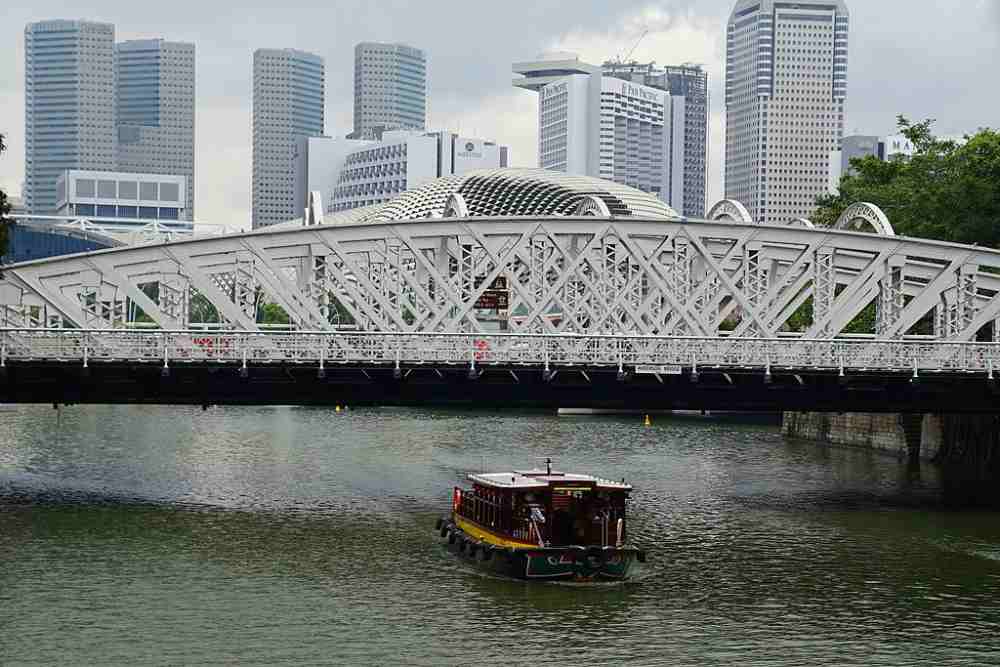 IMAGE: DAN ARNDT, CC BY-SA 4.0, VIA WIKIMEDIA COMMONS
IMAGE: DAN ARNDT, CC BY-SA 4.0, VIA WIKIMEDIA COMMONS
Cavenagh Bridge is the oldest surviving suspension bridge in Singapore. It opened to the public in 1869, connecting the government offices on the north bank of the river to the mercantile and commercial area on the other side of the bridge (modern-day Raffles Place). Before this bridge was built, people needed to pay a ¼ cent toll to cross a temporary footbridge - probably the first ERP our forefathers had to pay.
The bridge was built in Scotland, and tested with a load 4x its weight before it was shipped to Singapore to make sure it was confirm plus chop safe. It was named after Sir William O. Cavenagh, Governor of the Straits Settlements from 1859-1867.
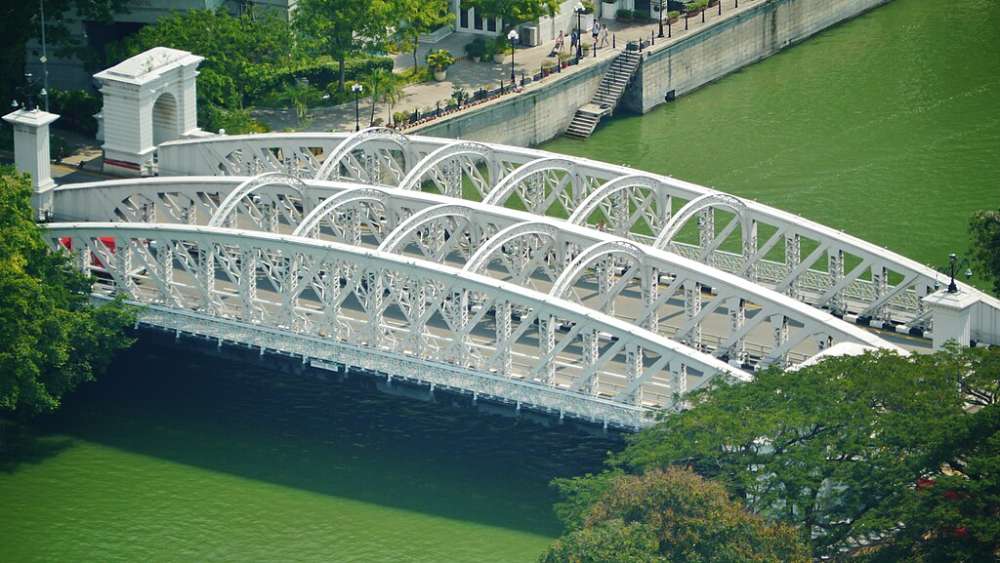 IMAGE: ZAIRON, CC BY-SA 4.0, VIA WIKIMEDIA COMMONS
IMAGE: ZAIRON, CC BY-SA 4.0, VIA WIKIMEDIA COMMONS
Anderson Bridge
What do you do when one bridge got traffic jam? Make another one loh. This steel bridge was opened in 1909 to ease heavy traffic on Cavenagh Bridge. It was named after Sir John Anderson, Governor of the Straits Settlement and High Commissioner for the Federated Malay States from 1904-1911.
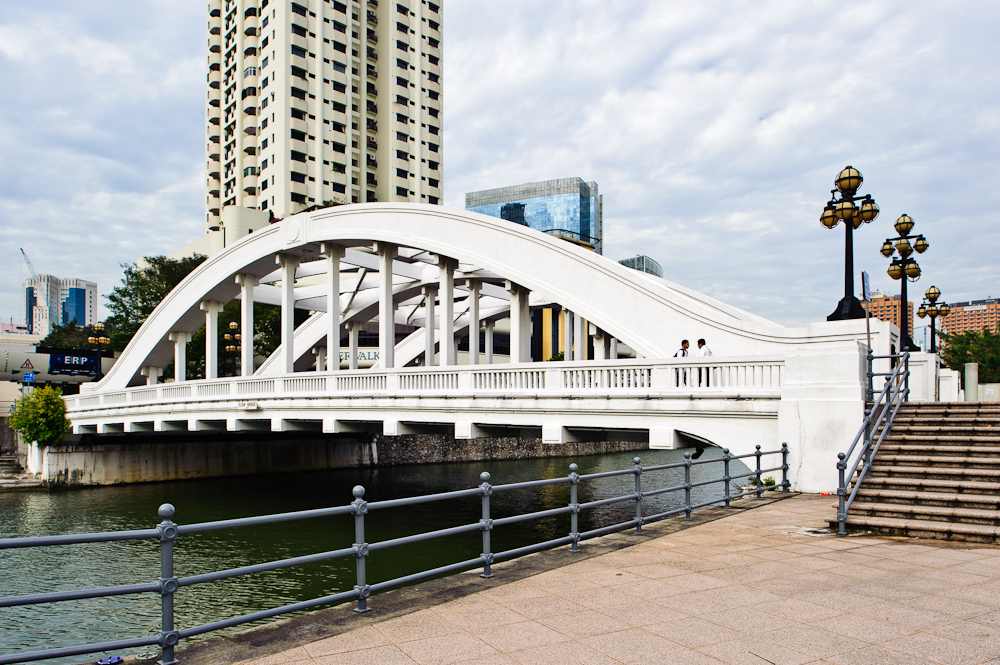 IMAGE: CRAIG STANFILL., CC BY-SA 2.0, VIA WIKIMEDIA COMMONS
IMAGE: CRAIG STANFILL., CC BY-SA 2.0, VIA WIKIMEDIA COMMONS
Elgin Bridge
Elgin Bridge was completed in 1929 and was the 5th bridge to be built at this spot - the same site where the first ever bridge was built across the Singapore River in the 1820s. North Bridge Road and South Bridge Road were named in reference to this bridge.
Elgin Bridge was named after Lord James B. Elgin, the Governor-General of India from 1862-1863. Look out for the medallions with a palm tree and lion (the symbol of old Singapore) and cast iron lamps - these were designed by Italian sculptor Rudolfo Nolli. You can find the same symbol at the Victoria Theatre and Concert Hall and Central Fire Station.
Cavenagh Bridge, Anderson Bridge, and Elgin Bridge were collectively gazetted as our 73rd National Monument. Speaking of National Monuments, there’s an exhibition highlighting these iconic structures happening at the National Museum right now.
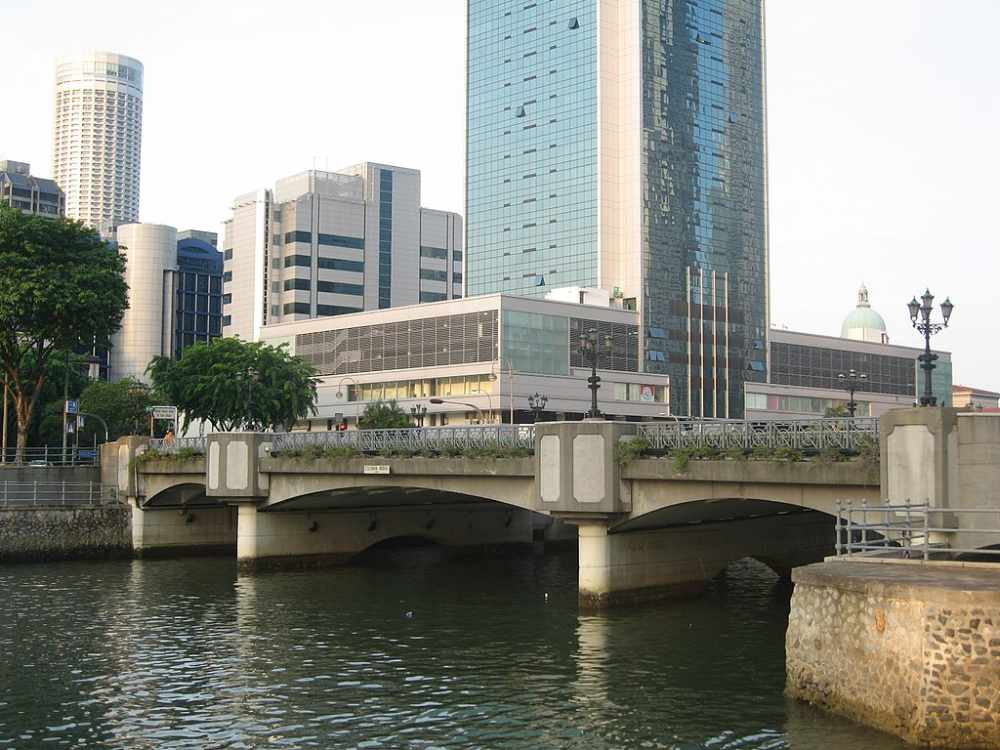 IMAGE: TERENCE ONG, CC BY-SA 3.0, VIA WIKIMEDIA COMMONS
IMAGE: TERENCE ONG, CC BY-SA 3.0, VIA WIKIMEDIA COMMONS
Coleman Bridge
This bridge was first built in 1840, later replaced in 1886 by a cast-iron and steel design. It was named after its designer, Irish architect George Dromgold Coleman, who also designed the Armenian Church and former Parliament House. The present-day Coleman Bridge retains its shallow arches, old gas lamp stands, as well as the railings with Victorian motifs.
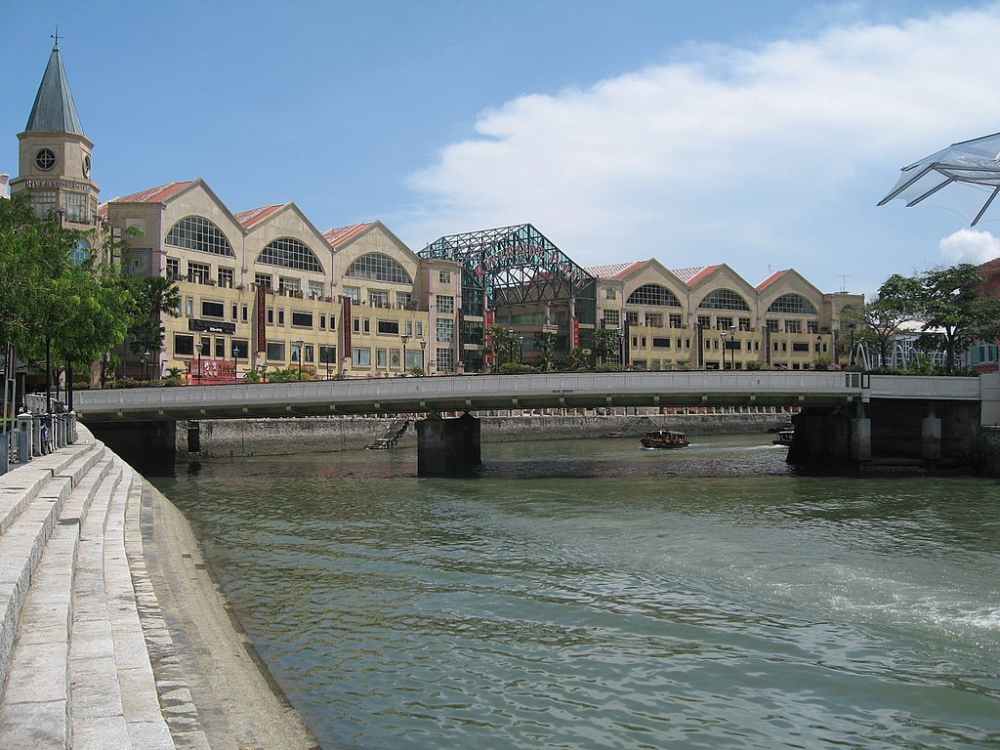 IMAGE: TERENCE ONG, CC BY 2.5, VIA WIKIMEDIA COMMONS
IMAGE: TERENCE ONG, CC BY 2.5, VIA WIKIMEDIA COMMONS
Read Bridge
We cross this bridge to go to Clarke Quay, but way back when it opened in 1889, it used to be a gathering site for Teochew labourers listening to traditional storytellers in the evening.
Read Bridge was named after businessman William Henry Macleod Read who was active in Singapore’s political and social scene at the time. It underwent extensive repairs and was converted to a pedestrian bridge in 1991 by the Urban Redevelopment Authority.
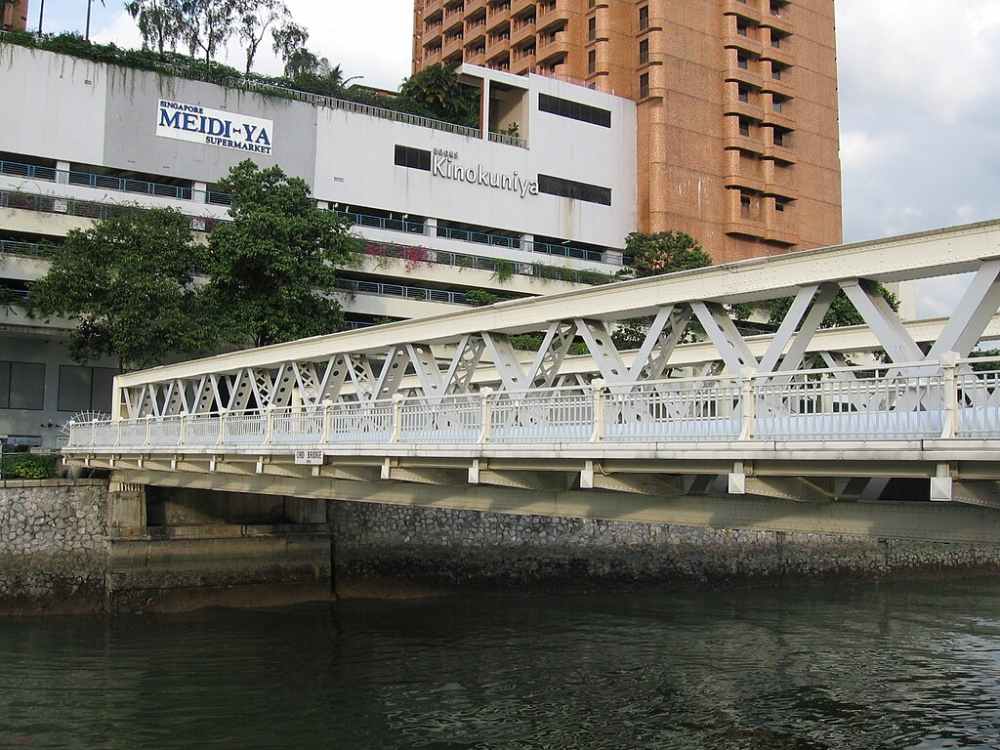 IMAGE: USER:SENGKANG, COPYRIGHTED FREE USE, VIA WIKIMEDIA COMMONS
IMAGE: USER:SENGKANG, COPYRIGHTED FREE USE, VIA WIKIMEDIA COMMONS
Ord Bridge
Nothing to do with ORD ya - though this bridge links River Valley Road to Magazine Road, where ammunition was stored in the past.
Ord Bridge was opened in 1886 and named after Sir Harry St George Ord, Singapore’s first Governor after the island became a Crown Colony. It was previously green in colour, so people used to call it the “green bridge” in their local languages. It also got the name “Toddy Bridge” because there used to be many shops selling toddy (palm liquor) in the area until the ‘70s.
Alkaff Bridge
Unlike the earlier bridges, Alkaff Bridge is quite new. Built in 1997, it is shaped like a tongkang (traditional river boat). The bridge is named after the area Alkaff Quay, which was named after Syed Shaik Alkaff - the original owner of Alkaff mansion who also funded the construction of Alkaff Upper Serangoon Mosque, a National Monument.
Alkaff Bridge’s eclectic colours are the masterwork of international artist Pacinta Abad. Bae will want to pose for the 'gram here, surely.
Go for a pint at Clarke Quay
The River House and The Cannery
Clarke Quay is where the party is after dark - but you might not know that it is home to the largest surviving cluster of riverside warehouses and many traditional buildings, many that have been around since the 19th century.
The River House is a Teochew-style mansion constructed in the 1880s, making it the oldest building in the area. It was restored in 1993 and won the Urban Redevelopment Authority’s Architecture Heritage Award in 1995. It was built by early Teochew businessman Tan Yeok Nee, and was once the a secret society HQ. Today, you can grab dinner at Mimi Restaurant or a drink at Yin Bar - or even hold your wedding at the mansion.
Another historic landmark at Clarke Quay is The Cannery, an 1891 warehouse. Before it became home to Zouk as well as several bars and restaurants, it was actually a pineapple cannery.
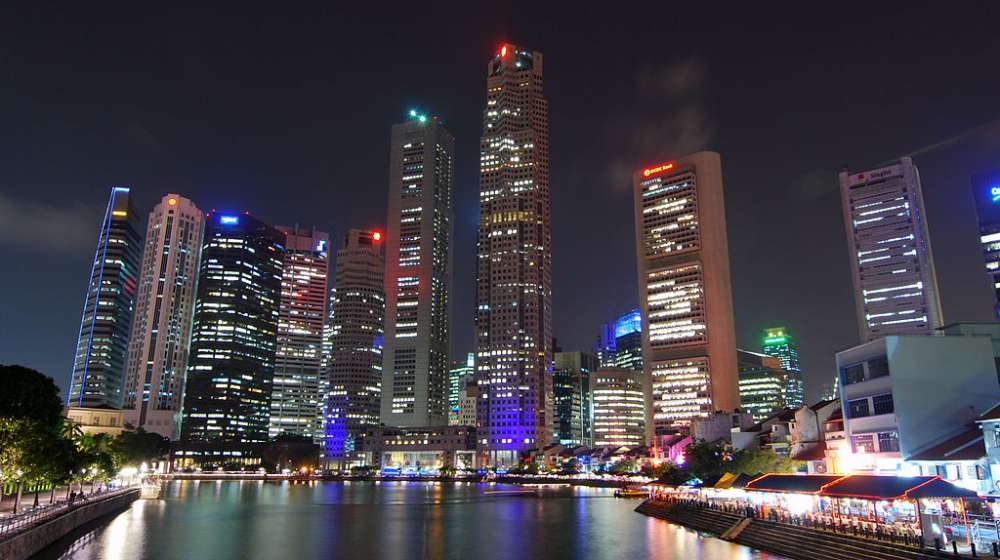 IMAGE: CHENSIYUAN, CC BY-SA 4.0, VIA WIKIMEDIA COMMONS
IMAGE: CHENSIYUAN, CC BY-SA 4.0, VIA WIKIMEDIA COMMONS
Dine by the Singapore River at Boat Quay
Just around the corner from Clarke Quay, is one of the best makan spots in Singapore - come at dusk for spectacular views of the Singapore River while dining out.
Boat Quay is actually Singapore’s first land reclamation project by Sir Stamford Raffles to transform the embankment into shophouses and warehouses. Many of these traditional shophouses have been restored as modern stores and riverside eateries.
If you’re pining for something local, grab a bite at 109 Teochew Yong Tau Foo. This place has been around for more than 30 years! Avoid the lunch hour crowd and order the laksa gravy.
For something more classy, head to the rooftop restaurant Braci for the amazing views, or try the adventurous menu at The Dragon Chamber.
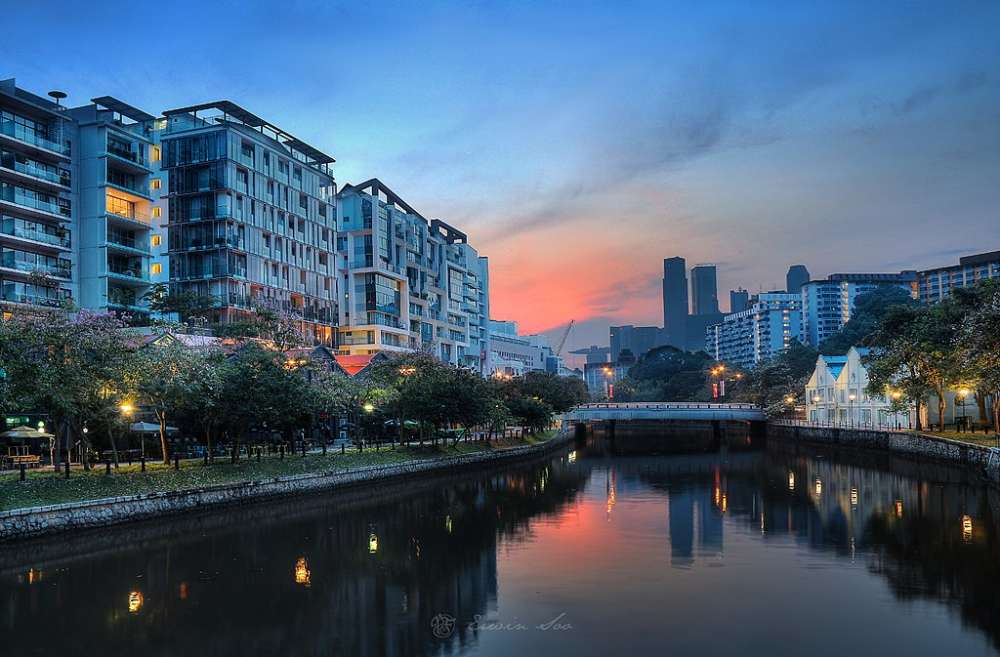 IMAGE: ERWIN SOO FROM SINGAPORE., CC BY 2.0, VIA WIKIMEDIA COMMONS
IMAGE: ERWIN SOO FROM SINGAPORE., CC BY 2.0, VIA WIKIMEDIA COMMONS
Date night at Robertson Quay
The quietest of the three Quays, Robertson Quay's tranquil atmosphere is perfect for a romantic night out. Before it became a place for dinner and drinks though, the old Robertson Quay was a bustling area dominated by boat yards and warehouses.
Take bae to a surprise date at Publico Ristorante serving great Italian fare, or book a table at Po for an atas Asian dining experience.
Your Insta-Walk checklist here:
Masjid Omar Kampong Melaka
Singapore is home to many beautiful mosques. This one in particular might not look like much, but Masjid Omar Kampong Melaka has the unique distinction of being the oldest mosque in the country.
The original structure was built in 1820 - one year after Raffles set foot on our island. A bigger building at the same site was completed 1855, then redeveloped decades later in 1981. This slice of history remains hidden away in the middle of Clarke Quay - see you can find it! NHB listed Masjid Omar Kampong Melaka as a historic site in 2001.
Former Thong Chai Medical Institution
This was the first traditional Chinese medical clinic to offer free treatments for the poor and needy of all races. The building at Eu Tong Sen Street, which was completed in 1892, still retains its traditional Cantonese-style architecture.
Currently, it serves as the Singapore office for aloe vera store Forever Living Products, so you can window shop while marvelling at the elaborate carvings and calligraphy inscriptions that adorn the walls.
The current Thong Chai Medical Institution moved to Chin Swee Road in 1979 and still provides free healthcare to people from all walks of life to this day.
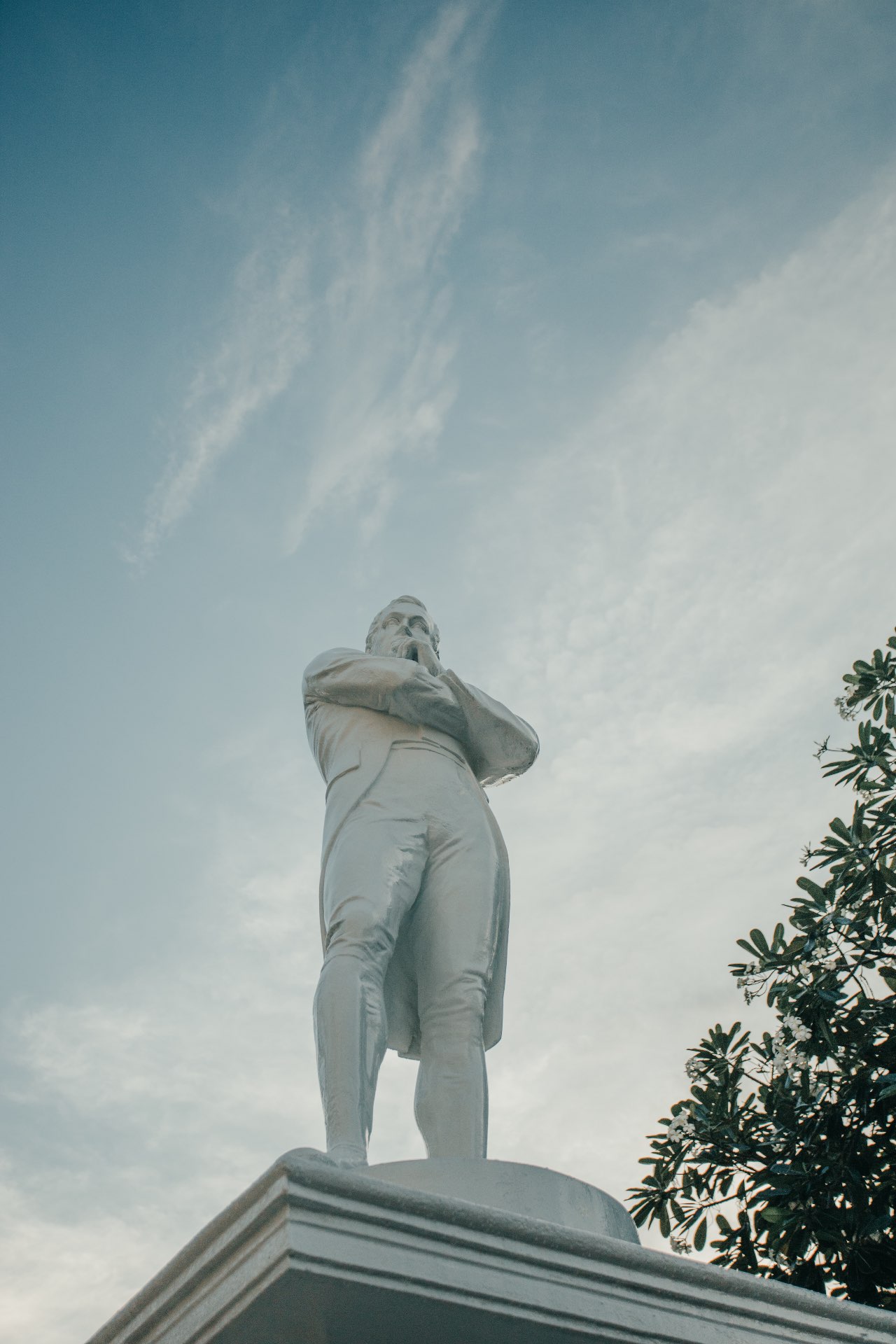
Art by the river
There are a number of statues installed along the Singapore River. The most famous is the one of Sir Stamford Raffles beside Empress Place, where it is believed to be his original landing spot. It was casted in 1972 and is a replica of a bronze sculpture by Thomas Woolner - the original still stands at Victoria Theatre and Concert Hall.
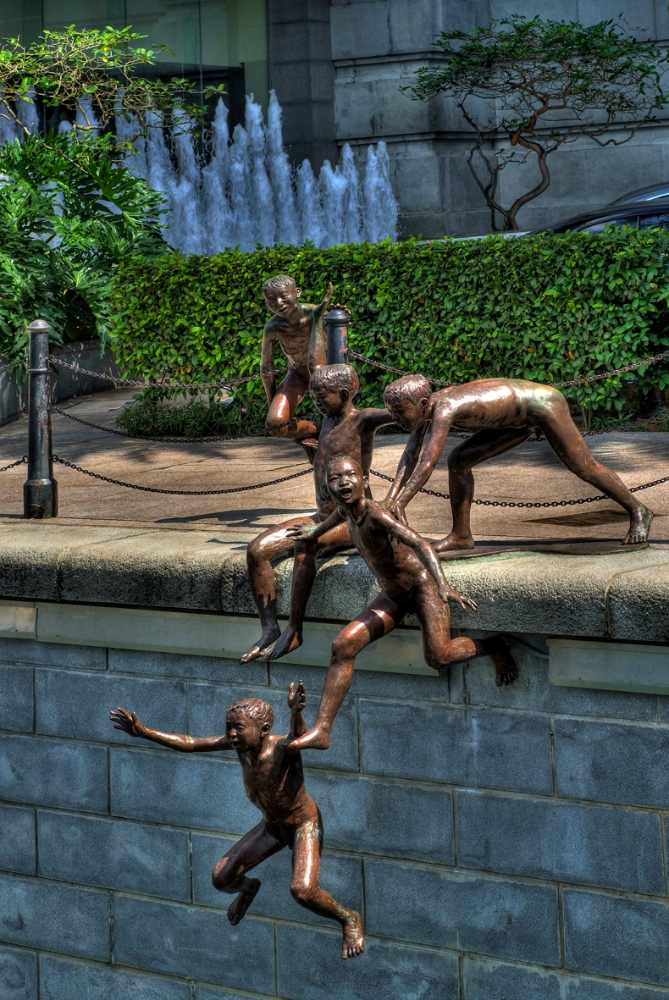
IMAGE: WILLIAM CHO., CC BY-SA 2.0, VIA WIKIMEDIA COMMONS
Near Cavenagh Bridge you’ll find these young boys leaping into the Singapore River, sculpted by Cultural Medallion Winner Chong Fah Chong.
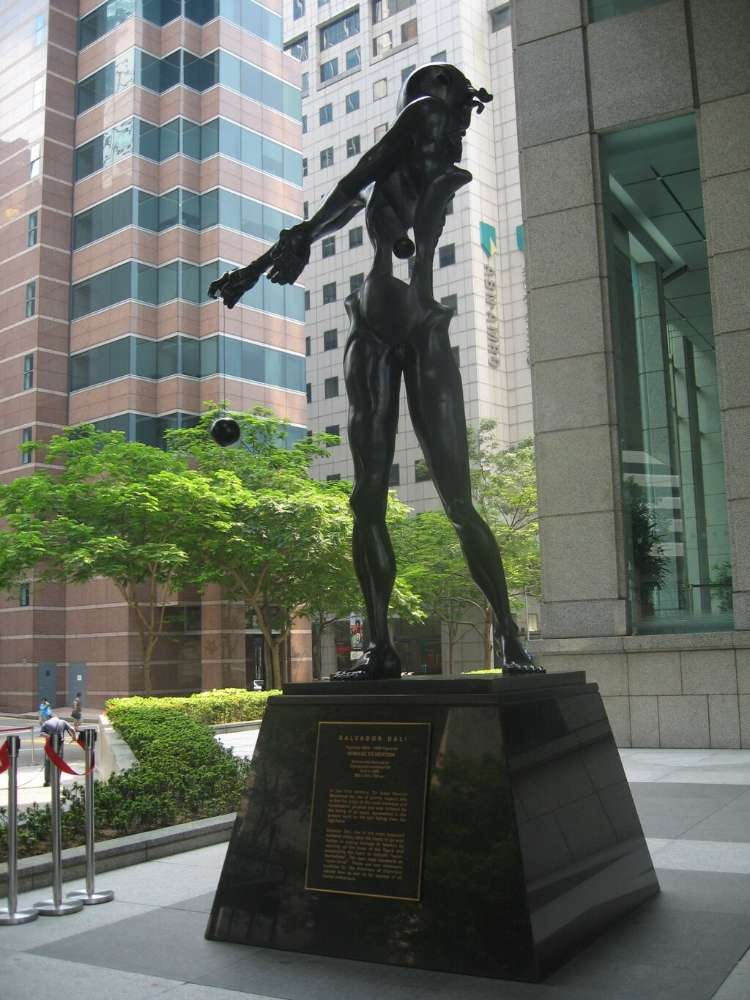
IMAGE: NO MACHINE-READABLE AUTHOR PROVIDED. TERENCE ASSUMED (BASED ON COPYRIGHT CLAIMS)., CC BY-SA 3.0, VIA WIKIMEDIA COMMONS
Even the great Salvador Dali has a sculpture in the area. It is called “Homage to Newton” and is located near UOB Plaza paying tribute to the discovery of gravity by Sir Isaac Newton.
Happening history sia
If you’re interested to explore the rich history of the Singapore River, you can follow NHB’s Singapore River Walk. Get your trail map and guide here.
For the latest updates on Wonderwall.sg, be sure to follow us on TikTok, Telegram, Instagram, and Facebook. If you have a story idea for us, email us at [email protected].







